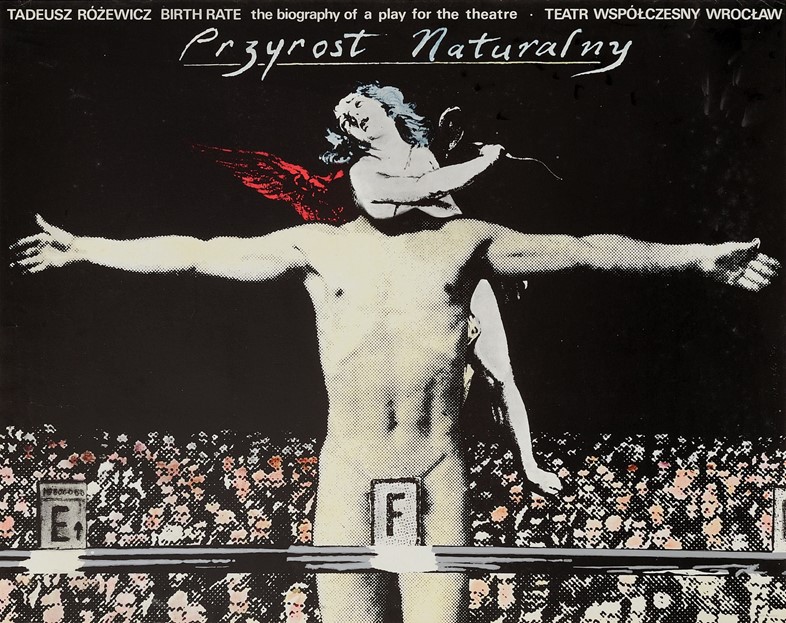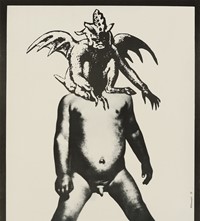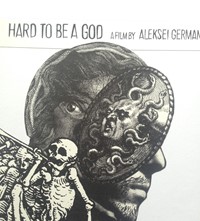The graphic artist reveals the origin of his baroque-horror visions
- TextBen Perdue
Taken from the A/W17 issue of Another Man:
Andrzej Klimowski’s 1980 poster for the Arnold Schoenberg opera Moses und Aron depicts his wife, Danusia Schejbal, transformed into a pagan dancer, her naked body wrapped in scarves and her head replaced by a winged serpent from a biblical engraving. This simple photomontage, brought to life in handpainted halftone dots, encapsulates every second of heathen sex and iconoclasm that drives Schoenberg’s brutal, Old Testament-inspired libretto. It’s a perfect example of how the graphic artist’s mastery of pure form enables him to communicate cultural themes so precisely, with so few ingredients. It also introduces Klimowski’s raw signature style, and a dark iconography rooted in the theological history of his Eastern European background.
Raised in London by Polish émigré parents, Klimowski took sculpture and painting at Saint Martin’s before moving to Warsaw to study poster art under renowned professor Henryk Tomaszewski. He worked for theatres and film distributors while studying in the mid-70s and, alongside set designer Danusia, belonged to Warsaw’s thriving arts movement, exchanging ideas with writers, actors and directors in their Communist-era high-rise flats, or over cheap canteen lunches.
“Of all the Eastern Bloc countries, economically Poland was one of the poorest, but culturally it was probably the richest,” he remembers. “Materials might have been in short supply but, so long as you didn’t have any political ambitions, you had total artistic freedom.
“The struggle in my work between fatalism and romanticism, darkness and light, came earlier. I absorbed it as a kid,” he explains. “Dad was in the Polish resistance, and we lived in a house full of displaced families where they set up the archive of the underground army. There were sabres, military maps and engravings of kings hanging on the walls. It all hovered around me and it stayed in my mind.”

Poland’s history of invasion, partition and uprising resonates throughout his work like a baroque mythology, from ornate folk costumes inspired by the Ottoman wars to grotesque figures lifted from Roman Catholic mysticism. Klimowski’s innate talent for conjuring nightmarish demons explains why his style lends itself to extracting the black heart of Beckett and Dostoyevsky, or films such as Taxi Driver and The Omen, with such devastating ease.
For that last horror he photographed his baby son, obscuring his head in the final layout with a cut-out gargoyle. The result is an irresistible jolt of pure gothic dread. Faces are often hidden or distorted: in a poster for Aleksei German’s hellishly beautiful film Hard to Be a God, features are sliced up and twisted at unnatural angles, hooking the viewer with a disquieting question that drags them into German’s world.
Now 67 and currently Professor of Illustration at London’s Royal College of Art, Klimowski has a practice that includes graphic novels whose narratives unfold over multiple pages – but the poster’s power to capture our imagination in one hit still excites him. It’s the reason he chose graphic design over fine art in the first place. “That, and the fact I made pictures that were reproduced in their thousands and then plastered on the walls of the city,” he says. “So much better than seeing your work in a white cube.”
The Klimowski Poster Book is published by SelfMadeHero in spring 2018.















